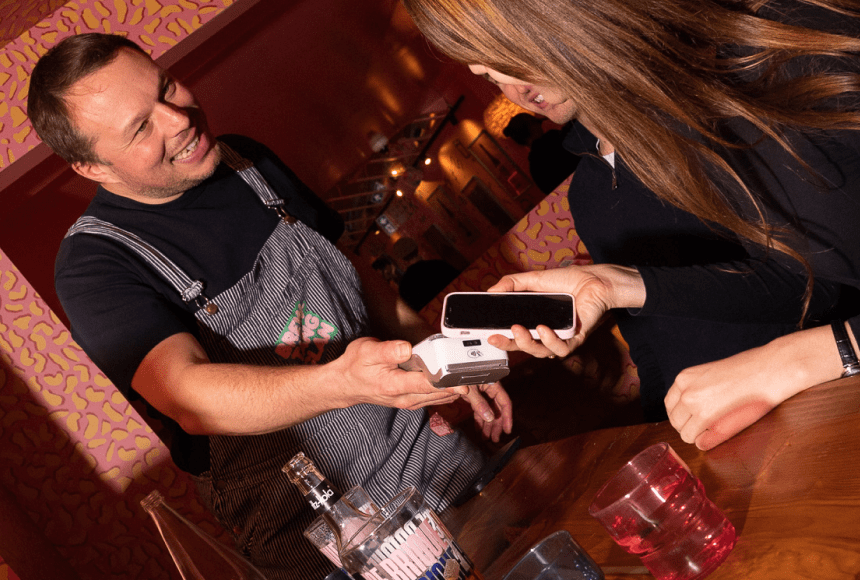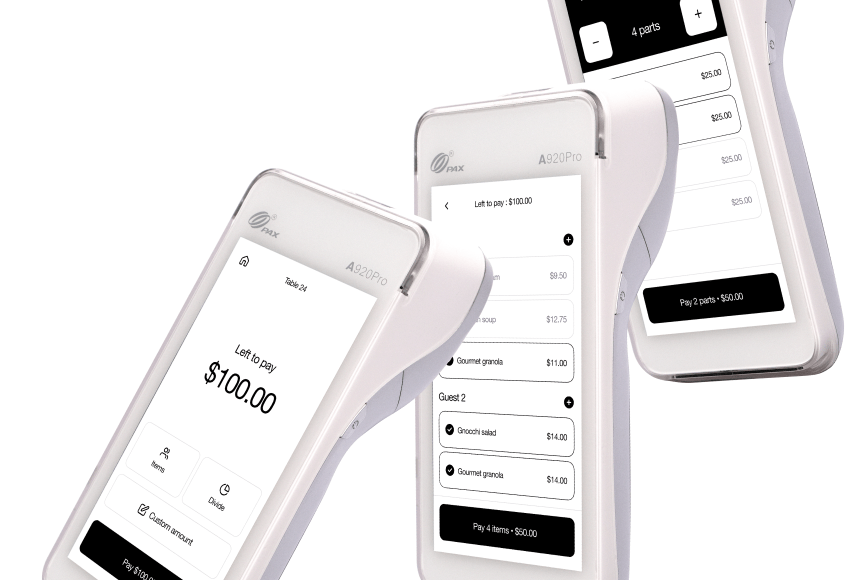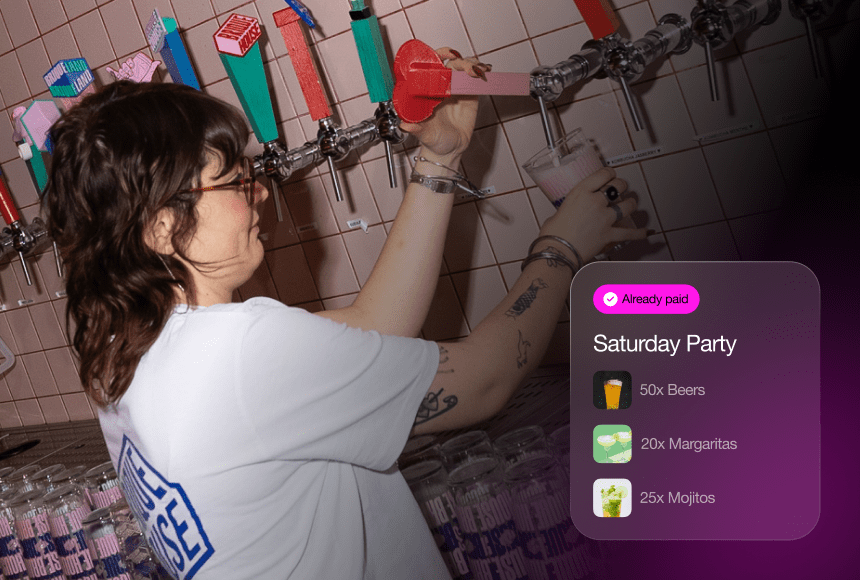
Finding the Ideal Payment Terminal to Streamline Your Restaurant Operations
Why Your Choice of Payment Terminal Matters
Have you ever had that moment at the end of a meal service when customers are ready to pay, but the only available card reader is stuck at another table? Or maybe you’ve witnessed your staff dashing around with one device, causing a bottleneck of guests trying to settle up and move on. These small hiccups create delays, frustrate patrons, and reduce table turnover. All of this affects your bottom line.
Selecting the right payment terminal can make all the difference in keeping your dining room running smoothly. It’s not just about processing a credit card—it’s about delivering a convenient, modern experience that meets (and ideally exceeds) your guests’ expectations. In the fast-paced world of hospitality, even minor improvements in efficiency can boost revenue, guest satisfaction, and your team’s overall morale.
But how do you decide which payment terminal best suits your restaurant? The market is awash with options, from sleek, portable handheld devices to robust point-of-sale (POS) systems. Add contactless and QR-based solutions like sunday into the mix, and the choices multiply. While that may sound overwhelming, the good news is that the decision process becomes much clearer if you know what features to prioritize—and which pitfalls to avoid.
Key Features to Look for in a Payment Terminal
When it comes to choosing a payment terminal, think about your restaurant’s specific workflow. Do you offer fine dining where servers spend a lot of time tableside, or is your place more of a high-traffic café where speed is paramount? Every operational model has its own quirks. That’s why you want a payment solution that’s not just cutting-edge but also tailor-made for your unique scenario.
- Portability: Handheld terminals let your staff run transactions right at the table. This can speed up checkout, reduce crowding at a central station, and allow for a more personalized interaction.
- Integration with Your POS: A terminal that easily syncs with your current POS system reduces manual data entry and decreases errors. Look for solutions that update orders and inventory in real-time.
- Contactless Payment Support: Customers increasingly want to tap their cards or pay via mobile apps. Ensure your device can handle contactless payments like Apple Pay or Google Pay.
- Security Standards: It’s critical that your payment terminal meets PCI compliance (Payment Card Industry standards) to protect cardholder data.
- Speed and Reliability: The device should process transactions quickly to keep lines moving. You also want strong network connectivity—Wi-Fi, 4G, or Bluetooth, depending on your floor plan and usage.
If you get these fundamentals right, you’ll already be ahead of many restaurants that simply grab the first gadget that looks sleek or is priced low. Remember, the cheapest option isn’t necessarily the best if it bogs down your team during the dinner rush or fails to keep up with the latest security standards.
Different Types of Payment Terminals
Restaurants typically fall into one of several categories when it comes to how they handle payments. Let’s explore common types of payment terminals and how they might fit various dining models.
Fixed, Countertop Terminals
A traditional countertop device is usually located next to your cash register or at a front counter. Quick-service restaurants or cafés with minimal table service can benefit from this model, as most payments occur at the counter anyway. However, these terminals might create congestion if your restaurant is bustling, or if you offer table service and need to run back and forth to complete each transaction.
Portable, Handheld Terminals
Increasingly popular in table-service environments, handheld terminals allow servers to settle the bill without leaving the table. This approach shortens the checkout process and provides a more personal touch, as the staff can remain with the guest. Portable devices are a strong choice if you prioritize speed and convenience—key ingredients for happier diners and quicker table turnover.
Mobile or App-Based Solutions
Some restaurants rely entirely on smartphones or tablets equipped with a card reader attachment or a payment app. This is particularly attractive for pop-up venues, food trucks, or smaller cafés with flexible seating arrangements. While the hardware can be minimal and cost-effective, you need a reliable internet connection, and the system may lack some of the advanced features found in dedicated restaurant solutions.
Compliance and Security: Non-Negotiable Essentials
No restaurant wants the nightmare of a data breach. Customers trust you with sensitive card information, and one unfortunate incident could tarnish your reputation. According to the FDIC Consumer News, online fraud and card theft are on the rise, emphasizing the importance of secure payment systems.
So what should you look for?
- PCI Compliance: This is the gold standard for safeguarding card information. Ensure that any payment solution you adopt meets these requirements.
- EMV Chip Technology: Chip-enabled cards are more secure than magnetic stripes. A terminal that supports EMV chips helps reduce the risk of fraudulent transactions.
- Encryption and Tokenization: Sensitive card data is typically encrypted during transmission. Some platforms also tokenize card information, so you never store actual card numbers on your own servers.
If you can confirm all these security aspects, you’ll not only protect your business but also reassure your customers that you take their privacy seriously.
Streamlining Workflow with Integrated Solutions
Picture this: a table orders drinks, appetizers, and entrées. Their data is fed into your POS system. At the end of the meal, your server hands over a handheld payment terminal that communicates directly with the POS. Everything from splitting checks to applying promotions happens in real-time. No double-keying, no confusion about whether the chef’s special made it onto the tab, no guesswork on tips.
Seamless integration spares your staff the hassle of re-entering orders or cross-referencing multiple devices. Plus, it helps close checks faster, which guests love. Your employees become more efficient, you reduce mistakes, and you keep your dining room’s flow steady.
Look for:
- Automatic Tip Calculation: The device should allow a simple way to add gratuities without requiring complicated mental math.
- Split Bill Functionality: Groups frequently want to pay separately. A user-friendly split check option can save time and reduce awkwardness.
- Real-Time Reporting: Integrated analytics can track not just sales, but also which menu items are selling best and during which shifts.
Balancing Cost with Value
It’s tempting to pick the cheapest payment terminal just to get the job done. But consider the long-term value. A bargain-basement device might fail sooner, handle fewer payment options, or lack software updates that keep you secure and efficient.
Here’s a rough cost breakdown many restaurants face when adopting new payment technology:
- Initial Hardware Purchase or Rental: Some providers let you rent terminals rather than buying them outright, which can reduce upfront costs but create recurring expenses.
- Transaction Fees: Payment processing fees vary. Sometimes you’ll pay a monthly subscription plus a per-transaction fee. Other times, it’s a flat percentage. Read the fine print carefully.
- Maintenance and Upgrades: Software updates might be included or require additional fees. Don’t overlook warranty or technical support costs.
Balancing these expenses against the potential revenue gains—through faster table turnover, fewer errors, and improved customer satisfaction—often reveals that investing in a quality solution pays for itself sooner than you might think.
The Rise of Contactless and QR Code Payments
Post-pandemic, guests have grown more comfortable with minimal-contact transactions. For many restaurants, this shift has turned scanning a QR code at the table into the new normal. With solutions like sunday, customers can view and settle their bill with just a few taps on their phone—no card swipe necessary.
Why does this matter?
- Faster Turnaround: Guests can pay whenever they’re ready, freeing up servers to handle more pressing tasks.
- Greater Transparency: Diners see the full itemized check on their own screen, reducing confusion and potential disputes.
- Built-In Review Prompt: Some systems politely nudge guests to leave feedback or a Google Review right after payment, which boosts your online reputation.
While you might still keep a physical payment terminal on hand for those who prefer traditional methods, offering QR-based payment is a great way to impress tech-savvy patrons and streamline your overall operations.
How sunday Can Complement Your Payment Terminal
Even if you settle on a top-notch payment terminal, you might want to offer guests an alternative that allows them to bypass any physical device altogether. Enter sunday, a solution designed to let guests scan a QR code, split the check, tip, and pay via their own smartphones. It’s not meant to replace your current terminal entirely—rather, it’s an enhancement that can reduce friction for both staff and diners.
Whether someone wants to pay the “old-school” way with a card or skip all the fuss and scan a code, you give them options. Multiple payment pathways mean fewer lines, less waiting, and a more dynamic table turnover. And from a marketing standpoint, providing a fast, modern payment choice can set you apart from competitors who still lean on bulky, outdated card readers that force guests to wait.
Questions to Ask Before You Buy
Let’s get practical. Before you invest in a payment terminal, gather your team—or at least key stakeholders—and discuss these points:
- How Many Transactions Do We Process Daily? High-volume spots might need multiple devices to keep pace.
- Do We Need Tableside Service, Counter Service, or Both? This will influence whether you opt for portable terminals or remain anchored to a register.
- Are We Experiencing Staff Bottlenecks? If your servers are juggling too many tasks, a portable solution can alleviate stress.
- What Integration Capabilities Do We Require? Make sure the terminal you choose aligns well with your existing POS system.
- Are We Prepared for Future Payment Trends? Technology evolves quickly. Look for solutions that can adapt to emerging payment methods, like digital wallets and NFC-enabled wearables.
Going through this checklist ensures you don’t end up with a device that’s outdated or ill-suited to your actual needs.
Staff Training: The Often-Overlooked Step
Investing in top-of-the-line hardware and software doesn’t help if your servers can’t use them efficiently. Proper staff training can’t be an afterthought—it’s essential. Dedicate time for employees to:
- Learn Common Errors and How to Fix Them: Understand what to do if a transaction doesn’t go through or a tip doesn’t register.
- Practice Splitting Bills: Splitting checks is one of the most frequent tasks, and doing it manually can lead to confusion and slow service.
- Experience the Customer Perspective: Encourage your team to act as diners. Let them see the full flow from ordering to payment. Once they appreciate the ease or complexity of each step, they’ll be better at guiding guests.
Your staff’s comfort with the terminal will directly affect the quality of the guest experience. Confident servers can handle complex requests gracefully and keep the line moving, while untrained teams might fumble or slow things down.
A Glimpse into the Future of Restaurant Payments
The restaurant industry is constantly innovating. While physical card readers remain a staple, you can expect an uptick in phone-based payments, wearable devices, and even AI-driven systems that identify customers and process charges automatically (though that’s likely further on the horizon).
What’s certain is that customers expect flexibility, whether they want to pay via card, phone, or a simple QR code. As you plan for your next payment terminal, don’t just think about your current setup—consider where you’d like your restaurant to be in two or three years.
By choosing a system with updatable firmware or flexible modules, you give yourself room to evolve without replacing your entire payment infrastructure every time technology advances. That future-proofing mindset can save money and keep you ahead of trends.
Making the Decision and Moving Forward
Choosing the right payment terminal can feel as complex as picking a star dish for your menu. The stakes are high, but the rewards are substantial. An efficient, user-friendly terminal boosts guest satisfaction, raises your staff’s confidence, and ultimately improves your profitability. Add in a solution like sunday for QR-based payments, and you’ve got a dynamic duo that caters to diners of every comfort level—whether they still prefer the classic “Insert or Swipe Your Card” approach, or they relish scanning to pay in seconds.
Ultimately, the perfect terminal for your restaurant will align with your service style, volume, and budget—and it will adapt as your restaurant grows. Remember to prioritize integration, security, and staff training, and don’t shy away from the contactless revolution. In the end, each transaction is more than just a payment. It’s the final touchpoint of your guests’ experience—and it can either reinforce a positive memory or leave them feeling impatient.
When you nail the payment experience—be it with portable devices or a seamless QR code scan—you create a satisfying last impression that can linger in a diner’s mind. With the right tools, paying the check becomes a quick, pleasant coda to a great meal, leaving guests free to focus on dessert, conversation, and plans for their next visit.
Find out more today
Drop us your details below and we’ll reach out within the next 24h
The payment terminal to make your operation simpler.
Connected to your POS, we offer the only payment terminal specifically designed for restaurants.



